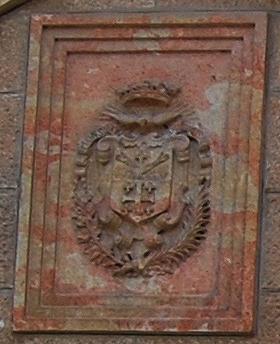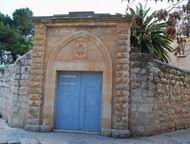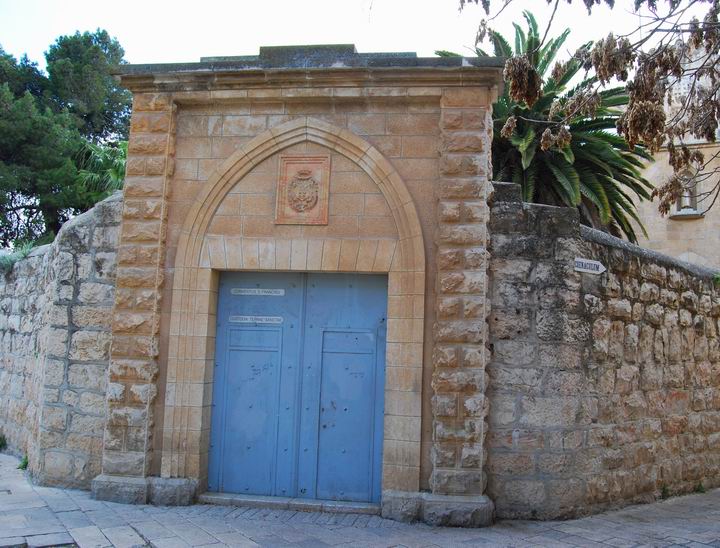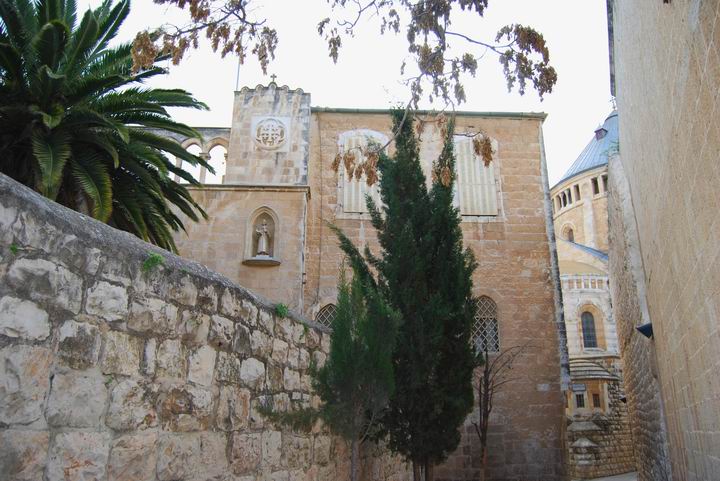St. Francis convent is located on the south side of the Zion Gate, outside the walls of the old city of Jerusalem.
Home > Sites > Jerusalem > Mount Zion > Franciscan “Terra Santa” convent
Contents:
Overview
Location
History
Photos
Links
Overview:
The St. Francis Convent is a Franciscan monastery located in the Old City of Jerusalem, near the Zion Gate. The convent is named after St. Francis of Assisi, the founder of the Franciscan order, and it is considered one of the most significant Christian pilgrimage sites in Jerusalem.
The original building was constructed in the 14th century, and it has undergone several renovations and additions over the centuries. The current structure includes a Gothic-style church, a cloister, a library, and a museum that displays ancient artifacts and religious objects.
One of the highlights of the convent is the Terra Sancta Museum, which showcases the history of the Franciscan order in the Holy Land. The museum contains a vast collection of artworks, manuscripts, and other religious objects, including the famous “Madonna and Child” painting by Giovanni Bellini.
The church of the convent is also notable for its beautiful architecture and impressive artwork. The interior of the church is adorned with stunning frescoes, stained-glass windows, and mosaics. The altar area features a large, ornate crucifix, and the ceiling is decorated with a depiction of the life of St. Francis.
Location:
The site is located on Mount Zion, outside of the old city walls and 100M south-west to Zion gate. It is easily accessed from the parking lot near the Zion gate.

History :
- Franciscan order
The Franciscan order was established by Saint Francis, an Italian who lived in the late 12th century. The Franciscans presence in the Holy Land started in the early 13th century, when they resided in a small house in via Dolorosa.
In 1342 Pope Clement VI declared that the Franciscans are the official custodians of the Holy places (“Custodia Terroe Sanctoe”). This custody is still in effect to date.
-
Convent history
From 1335 to 1551 the monastery was located in the place of the tomb of King David (1), the traditional location of the last supper. From 1551 until 1560 they resided in a bakery nearby. After then they relocated to another site in the city (St. Saviour).
(1) Thanks for S. Browns who provided a correction
Only many years later they returned to Mount Zion. In 1936 the Franciscans bought the bakery building from Dejani family, and transformed it into the present convent of St. Francis.
Photos:
The entrance on the side facing the Zion gate is seen below. The signs read “conventus S. Francisci” (Monastery of St. Francis) and “Custodia Terrae Sanctae” (Custodians of the Holy Land).
Click on the photos to view in higher resolution…
The seal above the gate is shown in detail below. In the center of the seal is the 5 crosses symbol – the Franciscan’s symbol. This symbol was the Crusaders sign of Jerusalem, and was adapted by the Franciscans. It is based on the 5 Holy wounds of the crucifixion of Jesus (2 in the hands, 2 in the legs, and one in the chest).

Above the five crosses are two hands on both sides of a cross – the symbol of the custody of the Holy places. The bare hand is the hand of Jesus, while the hand with a sleeve is St. Francis of Assisi, the founder. Both hands are perforated – the holes created by nails (Jesus on the cross, St. Francis of stigmata).
The photo below shows the alley that leads to the Dormition, seen behind between the two walls, and the tomb of David.
The statue of St Francis, the founder of the order, is seen on the wall. Above it is the symbol of the Franciscans: large cross with four crosses on each of its corners.
Links:
BibleWalks.com – walk with us through the sites of the Holy Land
Monastery of the Cross<—previous Jerusalem site–<<< All Sites >>>—> Dormition Abbey
This page was last updated on Feb 15, 2023 (new overview)
Sponsored links:


